Derek Eder
Civic Tech Builder

I use data, build tools, and organize people in Chicago to democratize power. Read more »
 DataMade
DataMade
Founder and Partner
 Village of Oak Park
Village of Oak Park
Trustee
 Chi Hack Night
Chi Hack Night
Co-Founder and President Emeritus
Wanna talk? Email me
Electrifying Our Old Oak Park Home #5: EV Road Trippin’
Published on Aug 28, 2024

A map of our route from Oak Park to the Upper Penninsula, Michigan and charging our Kia EV6
This is Part 5 of my series Electrifying Our Old Oak Park Home. Read the rest here.
In August 2024, our family took our first multi-day road trip with our electric car: 1,200 miles from Oak Park, Illinois, to Michigan’s Upper Peninsula. We had to do some research for this trip to be a success, so I’m sharing what we learned with you!
Table of contents
- Our trip: From Oak Park, IL to Michigan's Upper Peninsula
- Our car: Kia EV 6 Wind
- Finding a charging station: Plugshare and Electrify America
- Charging options
- Charging costs
- Tips for our next EV road trip and yours
- Other things we learned
- Bonus pics from our trip!
Our trip: From Oak Park, IL to Michigan's Upper Peninsula
Our trip, which we did over the course of 9 days, looked like this:
- Day 1: Oak Park, IL to Grand Rapids, MI to stay with friends - 185 miles
- Day 2-3: Grand Rapids to Paradise for two days - 305 miles
- Day 4-5: Paradise to Au Train for two days - 115 miles
- Day 6-7: Au Train to Mackinac City - 136 miles
- Day 8: Mackinac City to Grand Rapids - 237 miles
- Day 9: Grand Rapids back home to Oak Park - 185 miles
Usually, we charge our car at home in our garage. We don’t have a Level 2 charger — instead we just plug into the regular 120V garage outlet and get about 1.4kW of power. This is pretty slow — it takes about 40 hours to fully charge our car (we get about 5 miles of charge per hour), but it works for us because we don’t drive a ton and leaving it overnight in the garage is what we would do anyway.
A road trip is different. We need to be able to charge quickly and be on our way. This is where DC fast charging (also known as Level 3 charging) comes in.
Our car: Kia EV 6 Wind
Our car, a Kia EV6, has about 300 miles of range on a single charge. We knew we would need to plan out our trip to have enough juice, especially in the Upper Peninsula where there are currently no fast chargers, at least that we could find (more on that below).
We also knew we couldn’t really drive a full 300 miles between charges, as batteries charge slower once you get to about 80%. Why? This is because of the physics of current battery technology. For charging any battery, the charge speed will look something like this:

DC fast charging curve from power-sonic.com
One useful metaphor I’ve heard is that battery charging is like theater seating. In the beginning, as people (or electrons) enter the room, there’s lots of open seating and it goes quickly. As it begins to fill up, people get in the way and it takes longer for each one to find their spot.
Our Kia EV6 can charge super fast, from 10% to 80% in just 18 minutes if we were able to find a place to do DC fast charging. Thankfully, there’s a few apps for finding them.
Finding a charging station: Plugshare and Electrify America

Charging stations in Michigan and Chicago. Left: Electrify America’s high speed charger network. Right: PlugShare’s charger map.
America’s charging network, as you may have heard, is currently in a state of rapid change. Tesla, who has been building its Supercharger network since 2012, has a mature and well-established network. With a Kia EV6, however, we do not yet have access to that network (though everyone will soon).
Until then, we have to rely on the disparate network of chargers and apps they all have. Thankfully, there’s a useful app for that: PlugShare.
PlugShare is a crowdsourced app that shows a map of all available chargers, their connection type, power rating, and most importantly, reviews.
If you browse around on the PlugShare map, however, you’ll find that there are quite a few low power chargers which we really won’t want to bother with, especially on a road trip. There are a few 150kW and even 350kW chargers spaced out between cities, and those are all owned and operated by Electrify America.
Fun fact: Electrify America is a company initially funded by Volkswagen as a $2BN settlement for their diesel emissions scandal in 2015. And now, almost 10 years later, they just so happen to run the fastest and largest charging network in America other than Tesla. Thanks US EPA!
Charging options
Throughout our trip, we found ourselves prioritizing our charging at Electrify America stations first, and then falling back to other networks when Electrify America stations were not available. Here’s what each of those charging experiences looked like:
Option 1: Electrify America
All the Electrify America chargers we used were in the parking lot of a Meijer grocery store. They all had 6-8 chargers ranging from 150kW to 350kW power ratings and we never had to wait for a spot to open up.
We used the Electrify America app to activate the chargers (more on that below) but the process was pretty simple once we set up our account. In most cases, we were able to pull the full 233kW our EV6 tops out at, which meant we could get up to an 80% charge in 10-15 minutes.
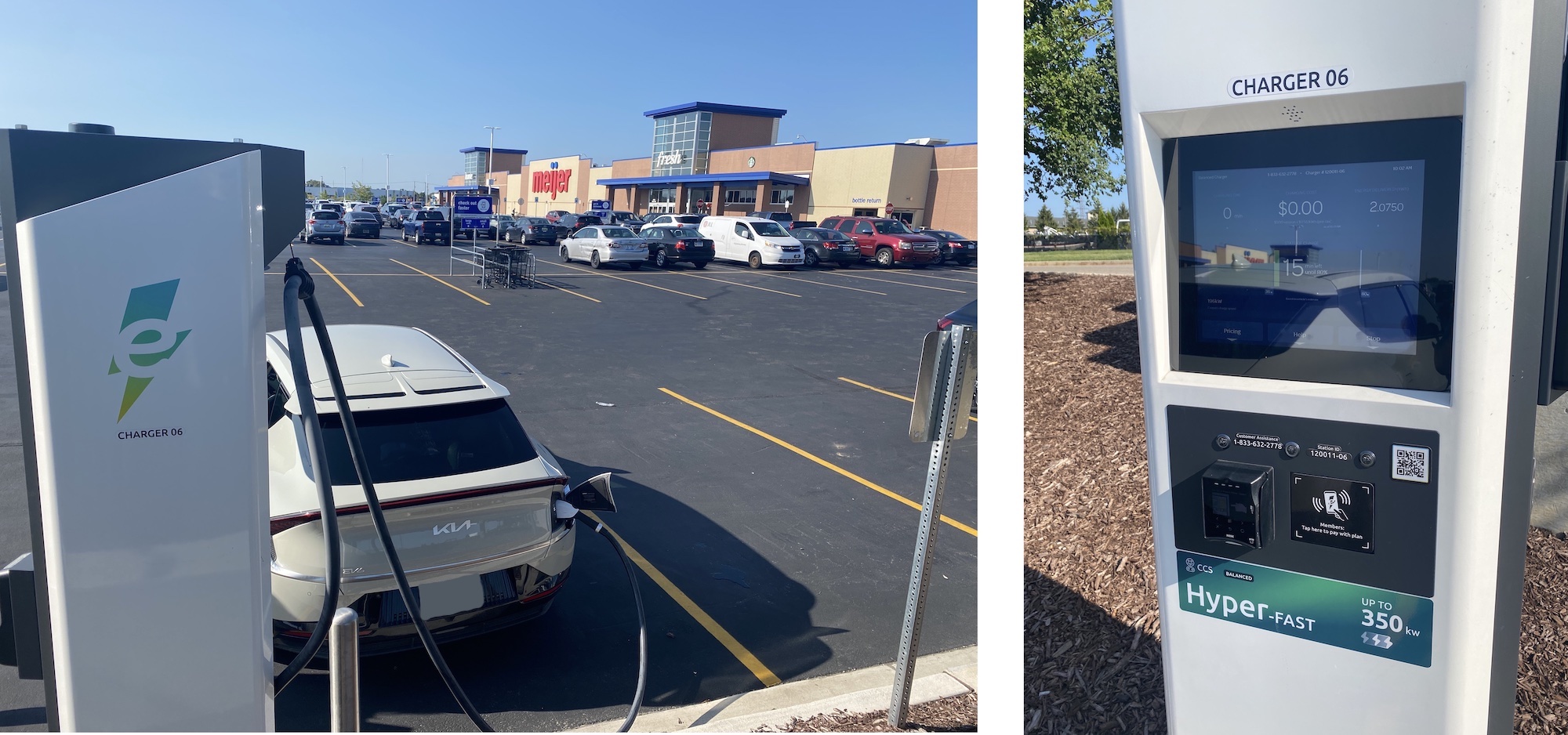
Charging at the 350kW Electrify America station at Meijer in Cadillac, MI
During that wait time, being close to a Meijer was pretty convenient for us, as we could pop into the Meijer and buy some snacks and use the restroom. Kudos to them for picking that location. Most of the other chargers were in less-than-ideal locations.
Option 2: ChargePoint, EVmatch, EVgo, Blink, and all the rest
When we needed to charge and an Electrify America charger wasn’t close by, we had to rely on the other chargers we found in Plugshare. There are quite a few (36 listed in Plugshare as of this writing) and we only used a few, but from that experience there are some general themes:
Theme 1: They all have their own app and they all are annoying to set up and use.
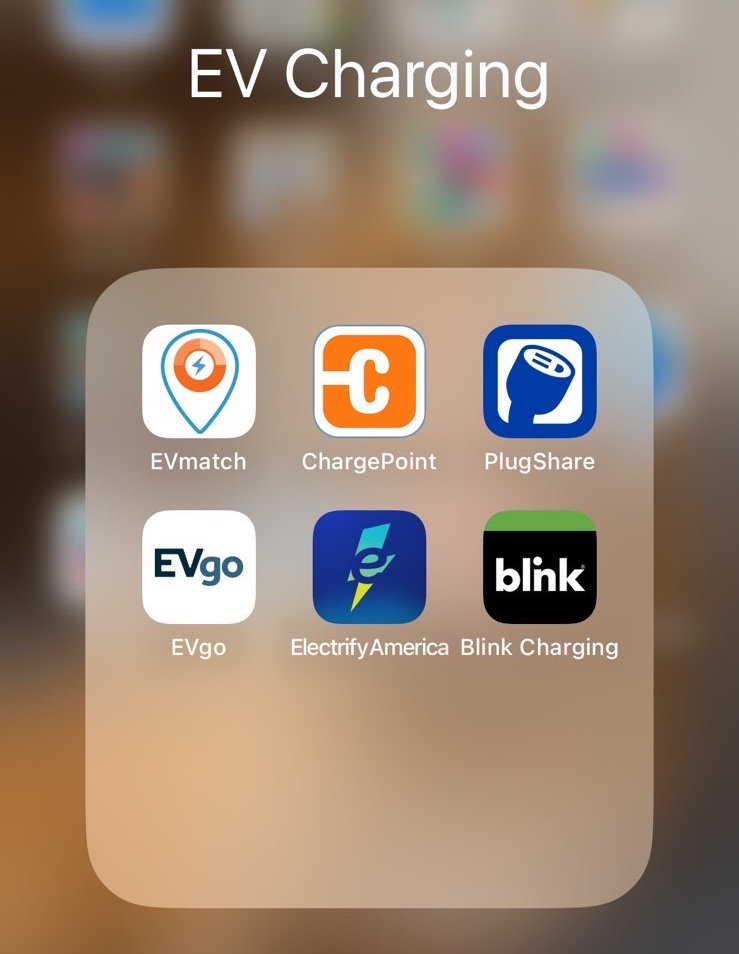
Our downloaded apps for all the different EV charger networks we set up: EVMatch, ChargePoint, EVgo, Electrify America, Blink Charging
Theme 2: They are located in random places like hotels and casinos, and there’s usually not much you can do while you wait to charge. Here’s us charging at the Odawa Casino in Mackinac City.
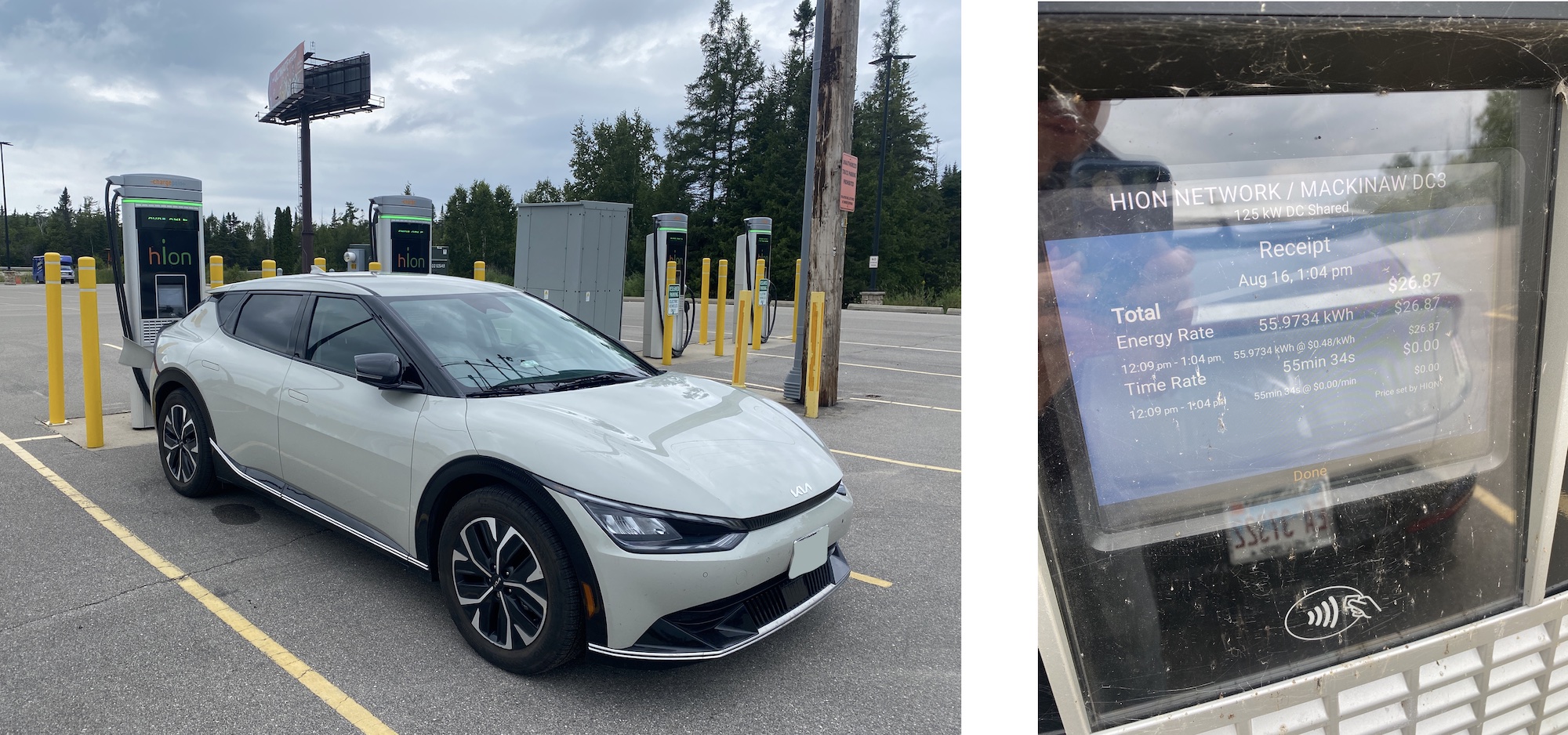
Charging at the 125kW HiON station at Odawa Casino in Mackinac City, MI using the ChargePoint app
Option 3: Any outlet we could find
When we got up to Paradise and Au Train in the Upper Peninsula, we found that there were no Level 3 chargers close to us. As a result, we ended up just plugging our car into any regular outlet we could find while it was parked overnight to get about 50 miles of charge. It should be noted that Level 2 chargers are becoming more common in hotels and Airbnbs, though we weren’t able to get access to any on this trip.
In Paradise, we plugged into a light pole in our hotel parking lot. In Au Train, we were able to plug into the outside outlet at our AirBnb.

Level 1 charging in a standard outlet with our Skysword Ⅱ Level 1-2 EV Charger
Thankfully this worked out for us, and we planned ahead and made sure to charge up to 100% in Mackinac City before heading into the UP.
Charging costs
All told, we did high speed charging at 6 spots. The total cost for this was $136.02. We also charged at a few regular outlets, but those didn’t cost us anything.
| Date | Provider | Location | Max Charge |
kW |
Charge time |
Amount |
8/11/2024 |
Electrify America | Hudsonville, MI | 236 kW |
53.2 |
19 min |
$31.58 |
8/12/2024 |
Electrify America | Gaylord, MI | 236 kW |
40.4 |
15 min |
$23.91 |
8/12/2024 |
ChargePoint | Mackinac City, MI | 125 kW |
34.8 |
44 min |
$16.69 |
8/16/2024 |
ChargePoint | Mackinac City, MI | 125 kW |
56.0 |
55 min |
$26.87 |
8/18/2024 |
Electrify America | Cadillac, MI | 186 kW |
19.7 |
10 min |
$11.69 |
8/19/2024 |
Electrify America | Hudsonville, MI | 199 kW |
42.7 |
20 min |
$25.28 |
Total |
246.8 |
2h 43 min |
$136.02 |
By comparison, if we had made the same trip in our old car, a 2014 Honda CR-V that gets 26 miles per gallon, at $3.25/gallon for gas, this trip would have cost us $145.38. Not a huge savings for us - the real cost savings for owning an EV is charging at home.
Tips for our next EV road trip and yours
We learned quite a bit on this trip! If you’re planning an EV road trip, keep these tips in mind:
-
Plan out your trip and know where charging stations are on the way using Plugshare.
-
Download and set up the charging apps you know you’ll need ahead of time. Waiting to do this at the station on your phone is really frustrating.
-
Bring your home charging cable with you if you can so you can plug into outlets when you need to.
-
Set your EV battery to allow charging up to 100% for road trips. As EV owners, we’re told to keep our charge at 80% or below to preserve the life of the battery. For a road trip, having the ability to save that extra juice gives you more flexibility between charges. You can set it back to 80% when you get home.
Other things we learned
-
Electrify America is the best non-Tesla network: As I said above, Electrify America had the fastest chargers in the most convenient locations and had the best user experience. I’ve read that others have had challenges with broken or downgraded charging stations, but that was not our experience on this trip.
-
EV Charging apps suck: There are dozens of different charging networks, and they each have their own terrible app you have to use. As a web developer, I can muddle through just about any form or system, but this is really an unnecessary burden being placed on EV owners. I can’t imagine non-tech savvy folks having an easy time with this, especially if you’re trying to do it on your phone while at a charging station. Thankfully, new regulations will be in place soon to require all charging stations to allow tapping your card to pay without an app. This can’t happen soon enough!
-
The EV charging standard is changing to NACS: In 2023, the EV world coalesced around Tesla’s charging port, now known as the North American Charging Standard (NACS) and the Tesla Supercharger network is starting to slowly open up to non-Tesla cars like ours. New EVs will come equipped with this plug type, and for cars like our EV6, adapters will become available for us to use the Supercharger network beginning in 2025.
-
Not all EVs can charge at the same rate! Our EV6 can charge up to 233kW. Some newer EVs like the Lucid Air, charge faster, and some like the Chevy Bolt and Ford Mustang Mach-E, charge much slower. Our trip would have been a bit more annoying if we had a slow-charging car. Edmunds has a useful list of EV charging speeds.
Bonus pics from our trip!
While this road trip was a fun learning experience, the real reason we did it was to enjoy the beauty of Michigan’s Upper Peninsula. Here’s a few photos from our very worthwhile trip!
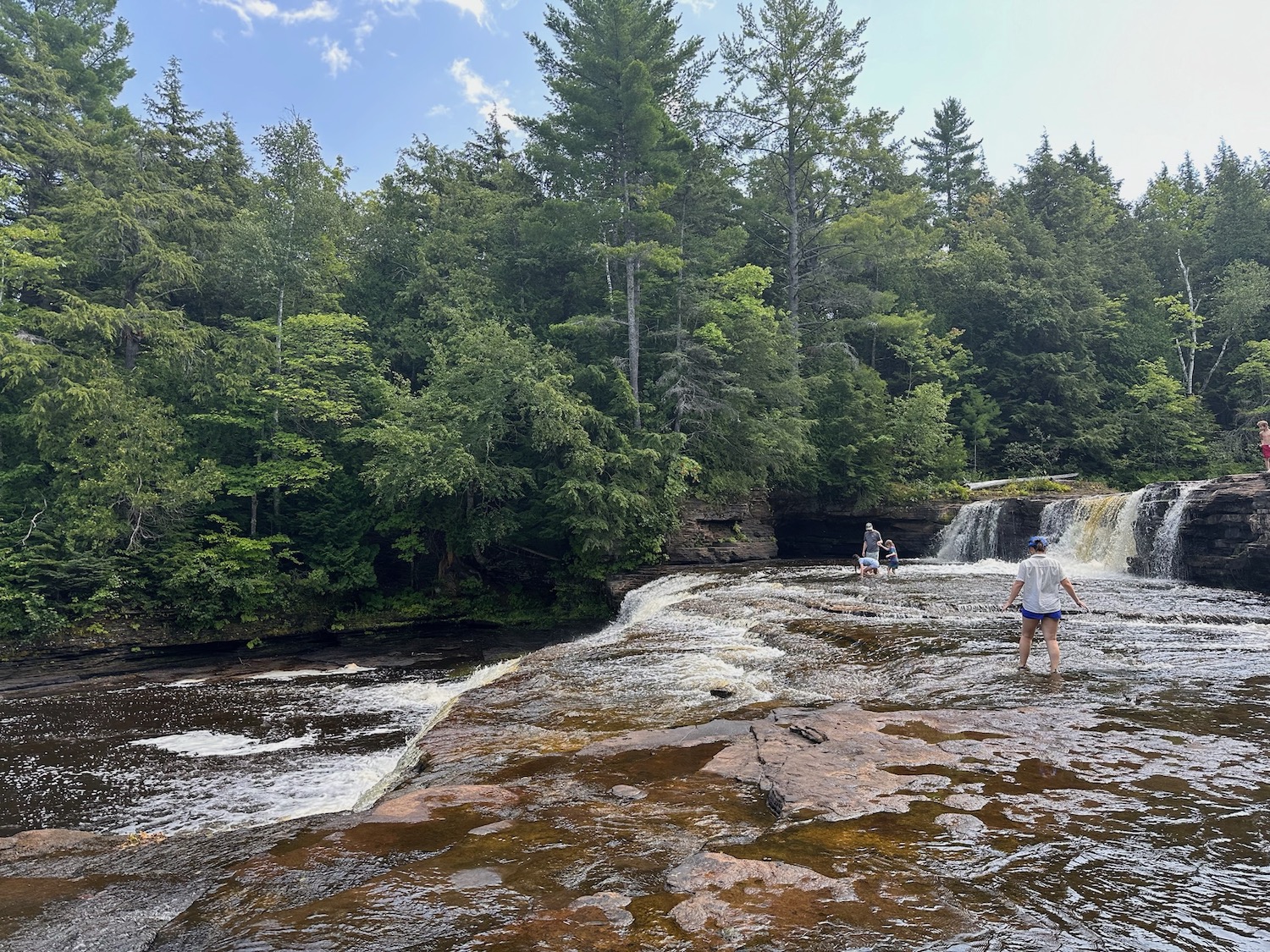
Walking the Tahquamenon Falls, MI
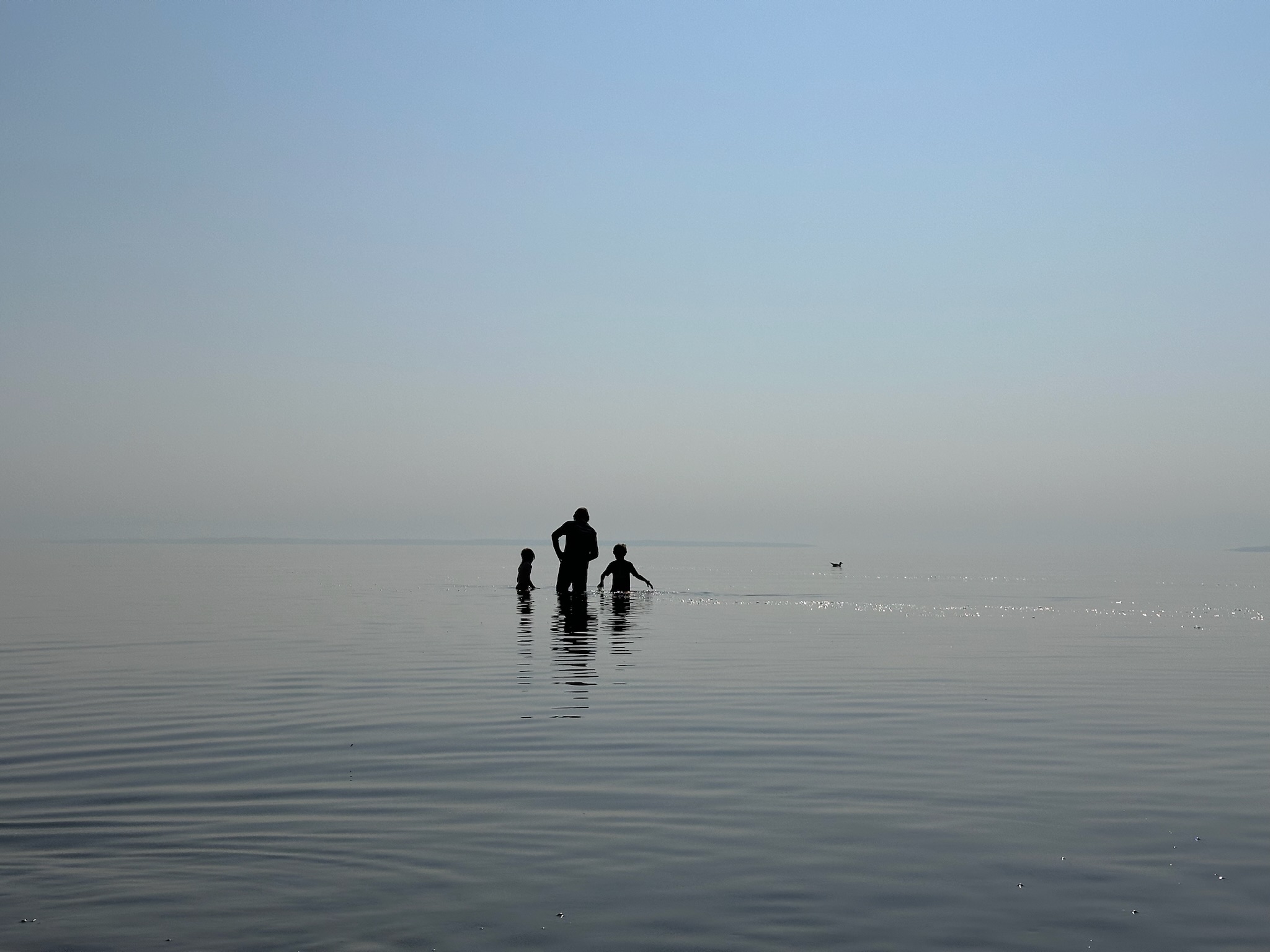
Swimming in Paradise, MI

Pictured Rocks, Grand Island, MI

Miners Beach, MI
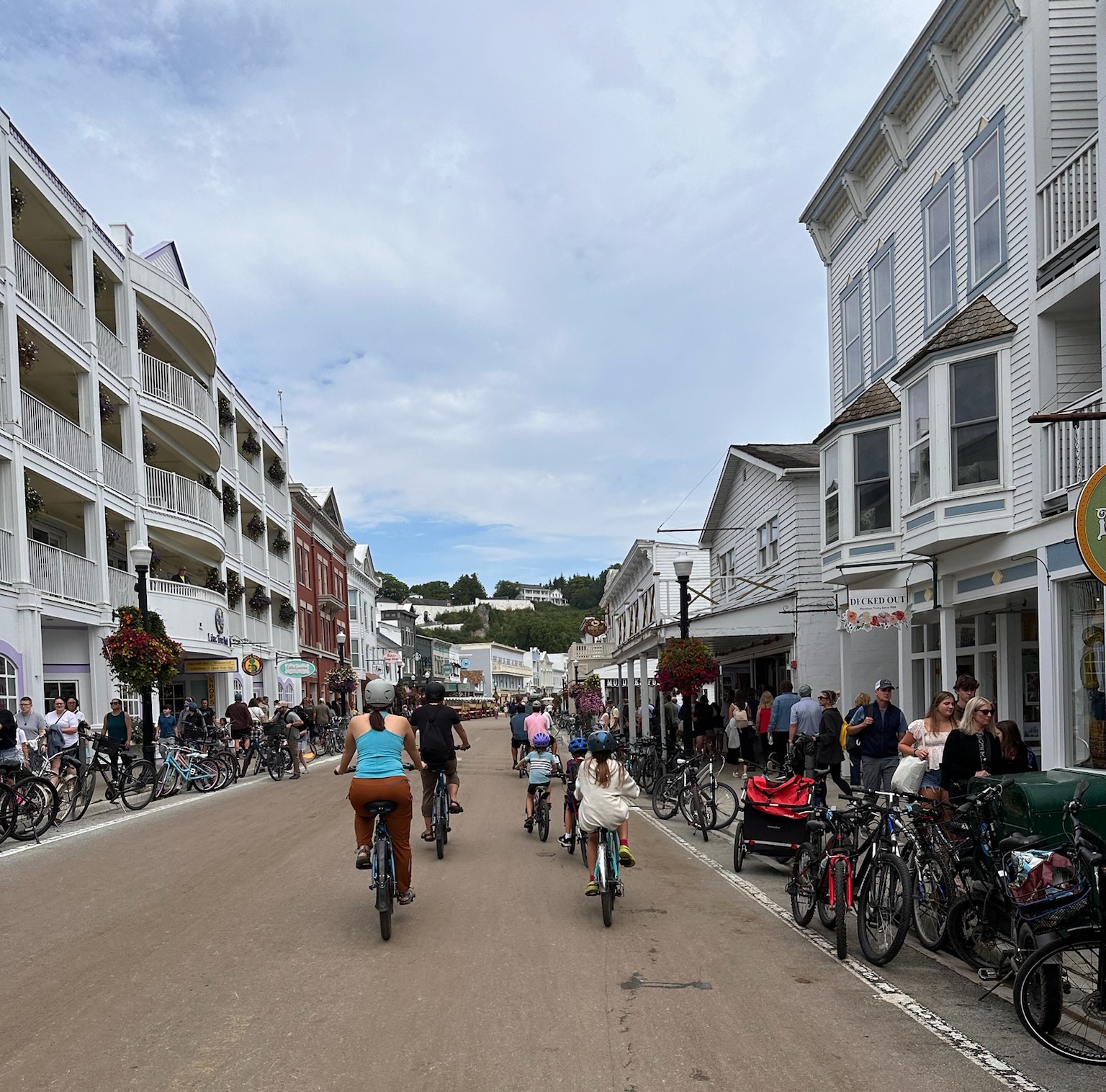
Biking in Mackinac Island, MI
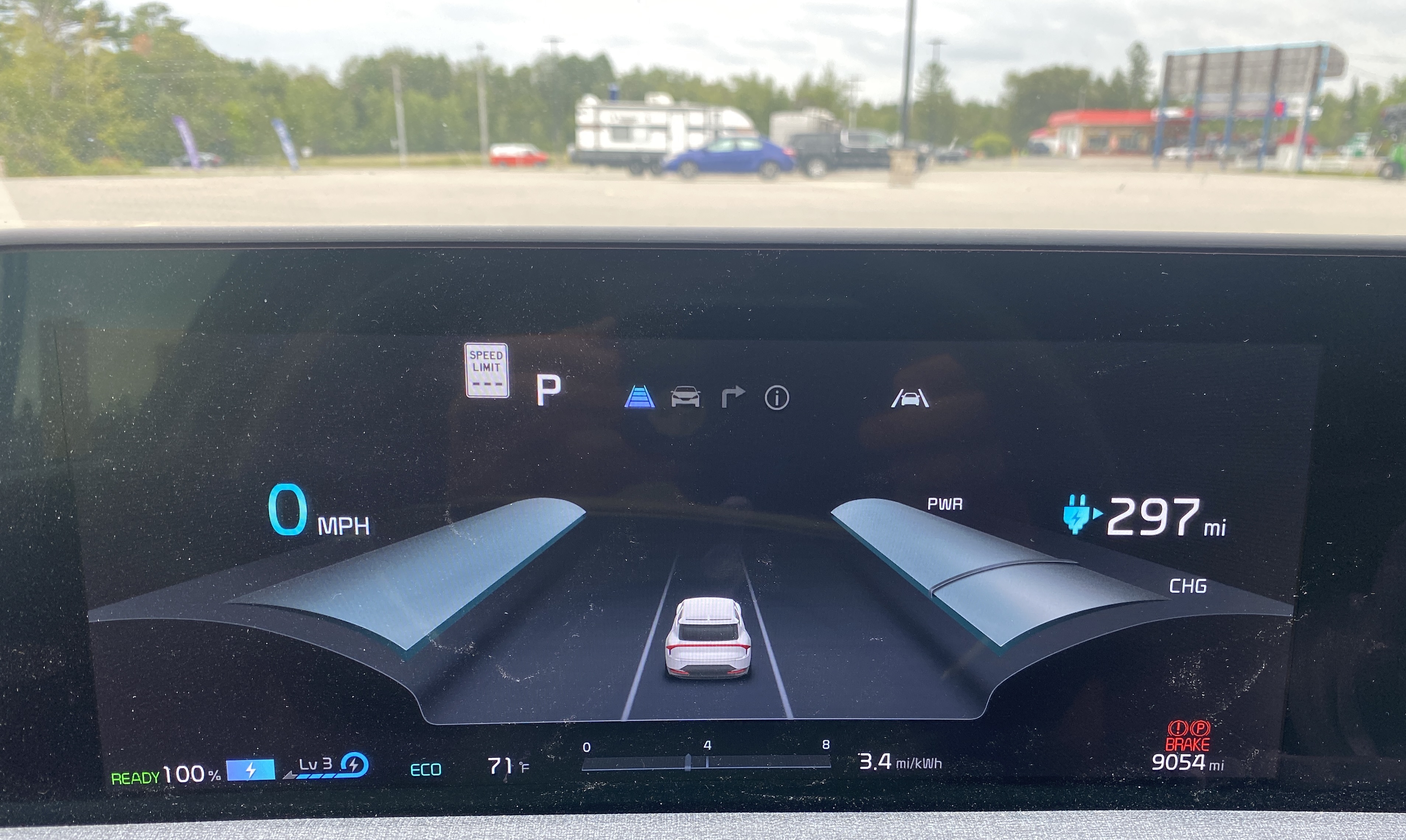
Our EV6 charged up and ready to go on our next adventure!
Special thanks to Aya O’Connor, Viktor Köves and Vien Nguyen for their help in editing this post!
Want to get my next post in your inbox? Sign up for email updates
Email signup • derek@derekeder.com • © 2025 Derek Eder